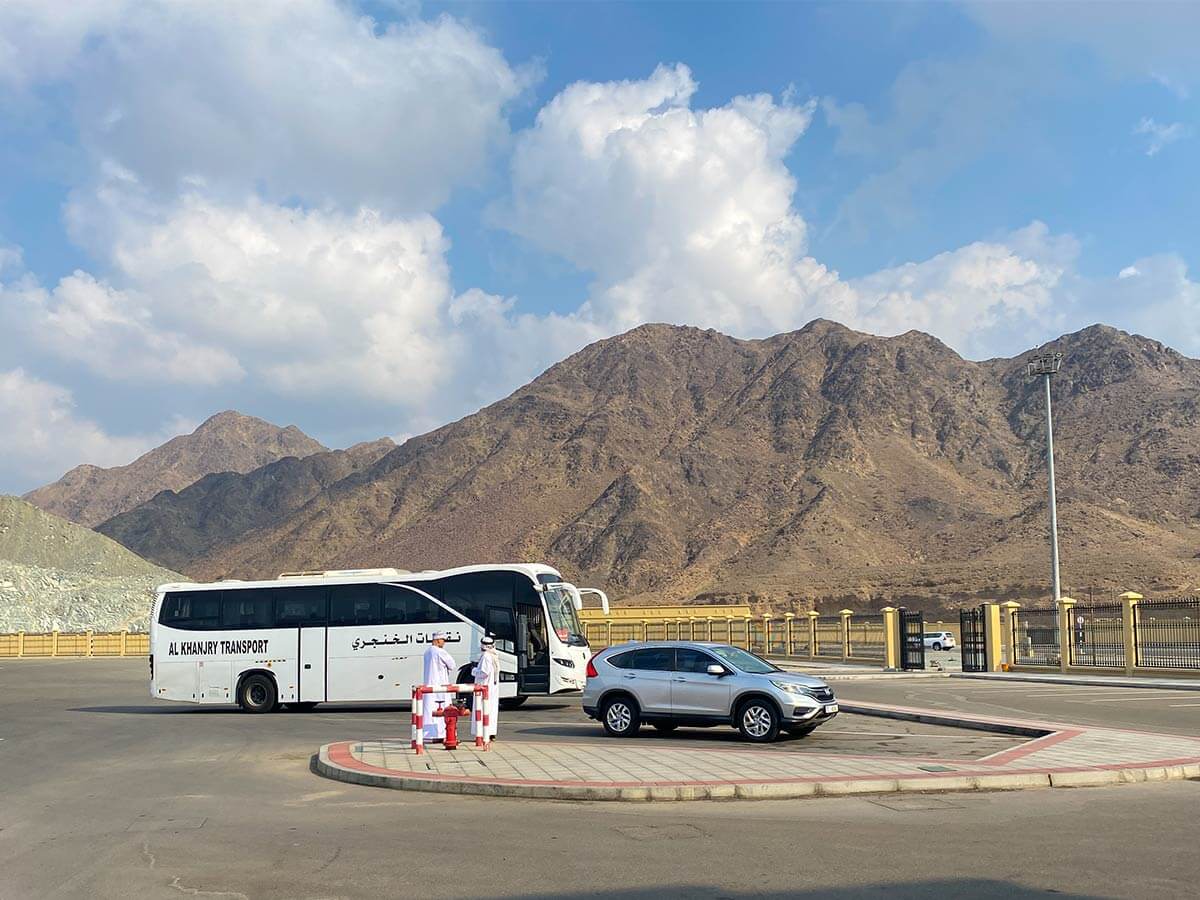For many GCC residents, a trip to Dubai doesn’t start at the airport—it begins on the open road. Whether you’re cruising through Oman’s mountain passes, crossing the endless deserts of Saudi Arabia, or driving up from Qatar through Saudi and into the UAE, the journey is as much a part of the adventure as the destination.
If you’re planning a road trip to Dubai in 2025, here’s your all-in-one guide covering border rules, visas, documents, costs, road conditions, and insider travel tips.
The Joy of Reaching Dubai by Road
-
Freedom to explore: Stop for coffee in Sohar (Oman), snap desert shots near Al Ain, or take a quick detour to Abu Dhabi before heading to Dubai.
-
Budget-friendly: Families often save money by driving instead of booking multiple flights.
-
More luggage space: Pack as much as you like without worrying about airline baggage limits.
-
Unique landscapes: From Omani mountains to Qatar’s flat desert roads—the scenery changes dramatically.
Main Land Borders into the UAE
From Oman
-
Hatta – Al Wajajah Crossing: The quickest way from Muscat, scenic through the Hajar mountains.
-
Khatmat Malaha Crossing: Straight shot into Sharjah and northern Emirates.
-
Al Ain – Buraimi Crossing: Best if your first stop is Abu Dhabi or Al Ain.
From Saudi Arabia
-
Al Batha – Ghuwaifat Crossing: The major gateway. After entering Abu Dhabi, Dubai is around 3 hours away on E11 highway.
From Qatar
-
Abu Samra – Salwa Crossing (into Saudi): Travelers head through Saudi before reaching the UAE at Ghuwaifat. Expect longer checks as two borders are involved.
Do You Need a Visa?
For Citizens
-
Omani nationals: Visa-free entry.
-
Saudi nationals: Visa-free entry.
-
Qatari nationals: Visa-free entry.
For Expatriates in GCC
-
Expat residents of Oman, Saudi, or Qatar need a UAE tourist visa for GCC residents unless they are from visa-on-arrival countries (like the UK, US, EU, Australia).
-
Common options:
-
7 or 14 days (short visits).
-
30 days (most popular).
-
60 days (for long stays or multiple visits).
-
You can arrange your visa online in advance with trusted providers like ApplyDubaiVisa.com.
Documents You’ll Be Asked For
Keep these handy for a smooth border crossing:
-
Passport (minimum 6 months validity).
-
UAE entry visa (if applicable).
-
GCC residency card/ID.
-
Car registration (Mulkiya).
-
Driving license (and International Driving Permit if required).
-
Car insurance with UAE coverage.
Special cases:
-
Company-owned or leased cars: Carry a No Objection Certificate.
-
Rental cars: Need written authorization from the rental company.
Car Insurance & Driving Laws in Dubai
Insurance
-
Omani insurers usually offer an easy UAE extension.
-
Saudi & Qatar drivers may need to buy border insurance if their policy doesn’t cover the UAE.
Rules on UAE Roads
-
Speed limits: Clearly marked—100–120 km/h highways, 60–80 km/h city roads.
-
Toll system: Dubai’s Salik toll gates charge AED 4 per crossing (electronic tag or rental billing).
-
Seatbelts: Everyone in the car must wear one.
-
Alcohol: Zero-tolerance—penalties are severe.
-
Parking: Paid zones across Dubai; use RTA’s parking SMS or app.
Driving Times to Dubai
-
Muscat → Dubai: 4–5 hours.
-
Riyadh → Dubai: 10–11 hours.
-
Doha → Dubai: 7–8 hours (via Saudi + UAE border).
Tip: Fridays, UAE public holidays, and Eid often see longer queues at the border.
Road Trip Costs
-
Visa fee (if required): AED 350–500.
-
Border exit fee: Oman ~OMR 3, Qatar ~QAR 35.
-
Insurance extension: AED 100–300.
-
Salik tolls in Dubai: AED 4 per gate.
-
Fuel: Cheaper in Oman & Saudi, slightly higher in UAE but still affordable.
Roadside Stops & Facilities
-
Fuel stations: Every 100–150 km on major routes.
-
Rest stops: Cafés, mosques, prayer halls, washrooms are well-maintained.
-
Emergency help: Police (999), Ambulance (998).
-
Breakdowns: Roadside assistance widely available in the UAE through RTA or private providers.
Insider Tips for a Smooth Journey
-
Start early morning to avoid traffic jams at borders.
-
Keep AED cash—some kiosks don’t accept cards.
-
Pack snacks & water, especially with kids.
-
Download offline maps for stretches with weak signal.
-
Refuel before UAE entry, especially if traveling through Saudi desert highways.
-
Check car condition (tires, brakes, coolant). Desert heat can be tough.
Frequently Asked Questions
Q1. Can I drive a rental car from Oman, Saudi, or Qatar into Dubai?
Yes, but you need written permission from the rental company and valid UAE insurance coverage.
Q2. Are pets allowed across the UAE border by road?
Yes, but you’ll need proper vaccination certificates and approval documents.
Q3. Can I exit and re-enter the UAE multiple times by road?
Only if your visa type allows multiple entry. Single-entry visas are canceled once you exit.
Q4. What happens if my UAE visa expires while I’m still inside Dubai?
Overstays attract fines per day. Always extend or exit before expiry.
Final Word
Traveling to Dubai by road is more than just a means of transport—it’s a journey through Gulf landscapes that end with the dazzling skyline of Dubai. Whether you’re coming from Muscat, Riyadh, or Doha, with the right documents, visa, and insurance, your drive will be smooth and memorable.
For expats who need a UAE visa, applying online via ApplyDubaiVisa.com is the fastest and most reliable way to prepare before hitting the road.
So pack your bags, check your car, and get ready—Dubai is just a drive away.

